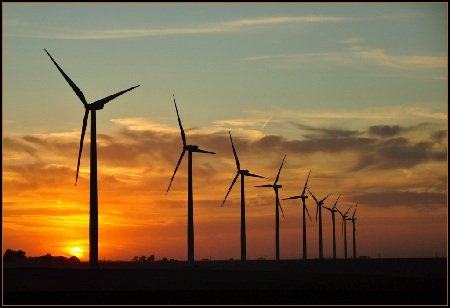India can add around $10 billion in direct and indirect gross value added (GVA) to the national economy if it adds 19.4 Gigawatt of onshore wind power capacity over four years through 2026, according to a new report by Global Wind Energy Council (GWEC).
However, the world's fourth-largest onshore wind market must revisit its existing wind reverse auction mechanism and introduce a robust tender mechanism to curtail unhealthy bid participation with mere volume seeking tendencies, the report "Accelerating onshore wind capacity addition in India to achieve 2030 target" stated. "The Indian wind sector is facing a series of legacy challenges that have led to a drastic slowdown in the pace of annual capacity additions," said GWEC CEO Ben Backwell. He added the reverse auction regime has fostered a market with “race to the bottom”
characteristics, which has seen inadequate volumes awarded, unsustainable bids and high levels of non-fulfilment and attrition, and inadequate focus on project quality and supply chain health. The report says leveraging the full potential of wind resources and adding around 100 GW of new wind energy capacity in India by 2030, demands an urgent overhaul. "Legacy operational challenges must be addressed and adequate support mechanisms to deal with shocks arising from force majeure events, that have evidently hampered tendered capacities, must be explored," it said.
India transitioned from the feed-in-tariff (FiT) regime to an e-reverse auction system years ago, leading to cost-effectiveness, or discovery of lower tariffs, but the transition failed to bring any stark change in terms of effectiveness or annual capacity addition, according to GWEC.
India has an onshore wind generation capacity of around 695 GW at 120 meter hub height. With around 41 GW installed onshore wind capacity, India ranks fourth globally. According to the Ministry of New and Renewable Energy (MNRE), around 2.2 million units of electricity is generated annually per MW of installed wind power, while 2 million units are generated per MW of solar power in India.
The Indian wind industry is home to 50,000 direct jobs, where nearly 10 per cent of the worldwide factories producing wind turbine components nacelles, blades, towers, generators, gearboxes and bearings are based in India. Around 33.7 FTE jobs defined as a full-time job for one person for one calendar year are generated per MW of wind energy installed in India, throughout the 25-year operating lifetime of a project.
